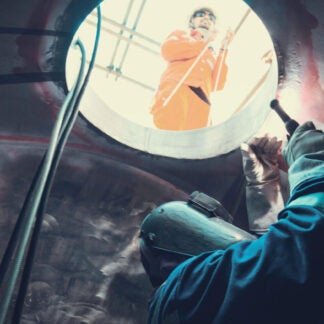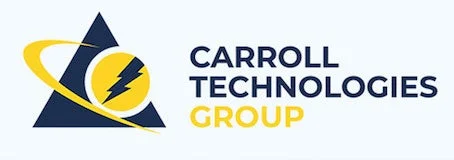
In the offshore oil and gas industry, workers will frequently be required to enter confined spaces for inspection and maintenance. As with any other part of an offshore platform, these workers need to be protected from any hazards that they may be exposed to.
Developing a confined space entry program involves being aware of the potential hazards in each unique area so that workers can be supplied with the most suitable equipment and training.
The Occupational Safety and Health Administration (OSHA) outlines two kinds of confined space. First is a low-hazard non-permitted space, which is not designed for continuous employee occupancy and as such has limited or restricted means for entry or exit but does not contain atmospheric hazards. This may include areas such as tanks or storage containers.
A permit-required space contains at least one atmospheric hazard. This may include material that has the potential to engulf an entrant, internal configuration such that a worker could become trapped or asphyxiated, sloping floors to a smaller cross-section, or any other hazards such as exposure to chemicals in confined spaces.
Developing a confined space safety program
Once aware of the potential hazards in a confined space, employers can implement measures necessary to prevent unauthorised entry, provide training, develop procedures for safe entry, and provide and maintain confined space entry equipment,
Utilising and understanding procedures and training, workers should use the equipment they are supplied with to test and monitor oxygen content, flammability, toxicity or explosive hazards, as well as continuously be contactable by a trained attendant either visually or via phone/two-way radio.
Safety equipment for confined spaces in the oil and gas industry
Carroll Technologies provides everything that an offshore oil and gas facility needs to keep workers safe in confined spaces, from safety signage for exit routes to respirators and gas detection devices.
From MSA, Carroll supplies the Altair 4X and 5X multi-gas detectors for continuous monitoring of combustible or toxic gases, which also feature motion detection to alert others if the user has become immobile.
Pyott Boone Electronics (PBE) supplies an extensive range of two-way radio systems that provide complete communications coverage, so workers in confined spaces can continuously stay in contact with attendants. Models include the 111 Page Boss, fitted with a bullhorn speaker, and the 112 Page Boss Mine Phone, which features a sounder strobe for increased audible and visual alerts in noisy working areas.
For safety signage, National Marker Company (NMC) supplies custom signs in an array of materials, from plastic to aluminium, and in a range of colours.
To contact us for a quote or to discuss which products are best suited for your offshore confined space safety program, send an enquiry here or call 606-573-1000.
This article was first published on Carroll Technologies



